You may have noticed that I made a number of hats for the Mansfield Garden party, so it’s probably no surprise that some of them are showing up as entries for the Historical Sew Fortnighly ‘Protection’ challenge.
Hats were essential fashion items throughout the first half of the 20th century, but they were also important for protection. Sunglasses were extremely uncommon, and the wide brims of summer hats helped to protect the eyes from the sun’s glare, and also to protect the skin and preserve the pale, untanned complexions that were considered fashionable.
They work extremely well for both functions: I get terrible headaches if I don’t wear a hat or sunglasses, but with one or the other, I’m fine. And New Zealand’s sun is notoriously harsh, but my models and I stayed happily un-sunscreened and un-sunburnt for a whole day out in the blaze courtesy of our hats (and parasols).
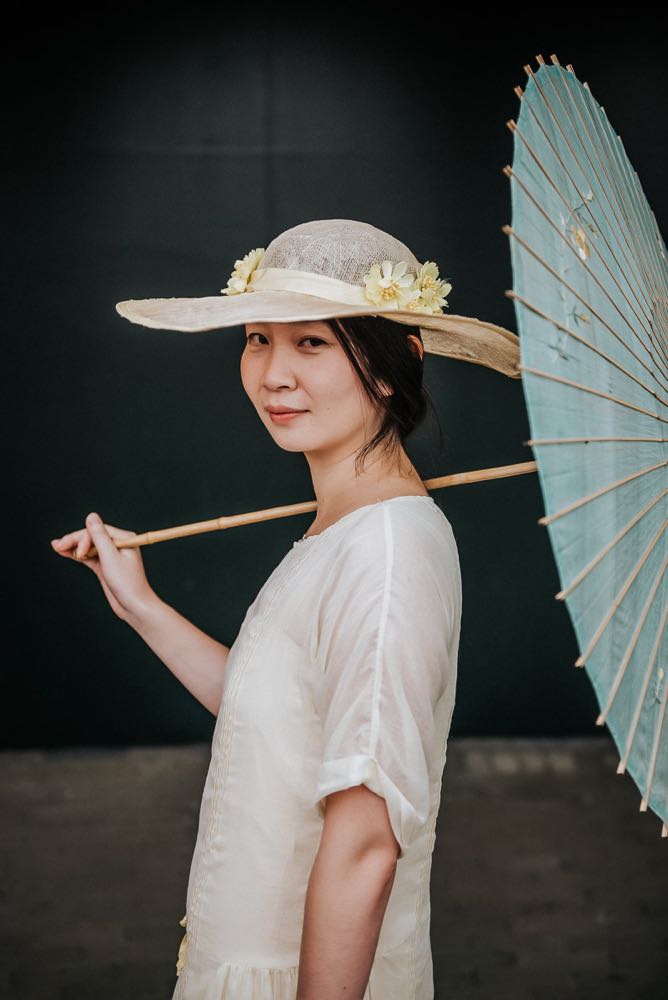
Courtesy of Tony McKay Photography and Glory Days Magazine
This particular hat represents the styles of hats worn in the very late 1910s and early 1920s. It was also an experiment in some new millinery techniques for me, and unfortunately, I don’t think I ended up getting the shape quite right for my period.
I was inspired by hats like the white one covered in flowers at the top of this photo (sadly, I was unable to find enough suitable flowers to cover the whole crown in them):
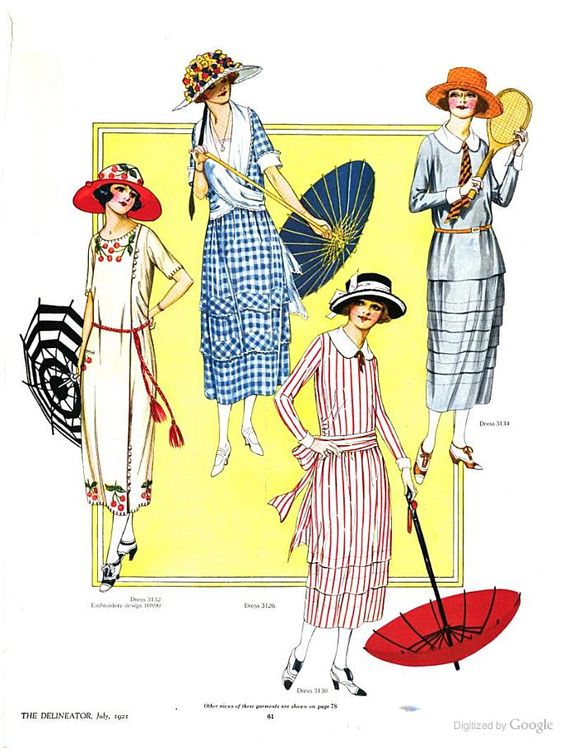
The Delineator, Fashions for July 1921
And the translucency of hats like this one:
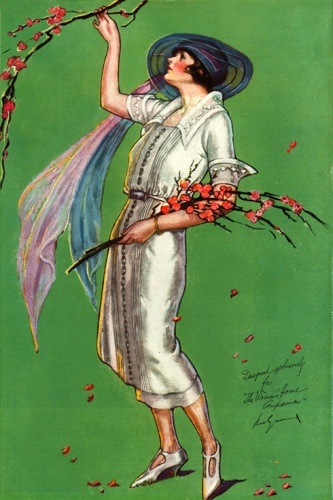
White gown by Molyneuz – Illustration by Ruth Eastman, 1921
For my hat, I used sinamay. This was partly because I had an old sinamay hat in my stash that desperately needed re-making, and partly because Quinn made the most gorgeous 1920s sinamay hat that I have been drooling over for the past year and a half.
Sinamay is a fabric woven from the fibres of the abacá, a kind of non-edible banana palm from the Phillipines.
This isn’t the right kind of banana, but if you look at this photo of apple bananas on my parent’s farm, you can see the brown, papery outer bark. That bark has fibres in it, and the fibres can be stripped and used as threads.

A grove of apple bananas
To make sinamay the abacá threads are processed and sun-bleached, to improve their softness and whiteness, and then woven into a loose, open fabric. Because the fabric is so loose and open, it’s easily shaped and blocked when damp.
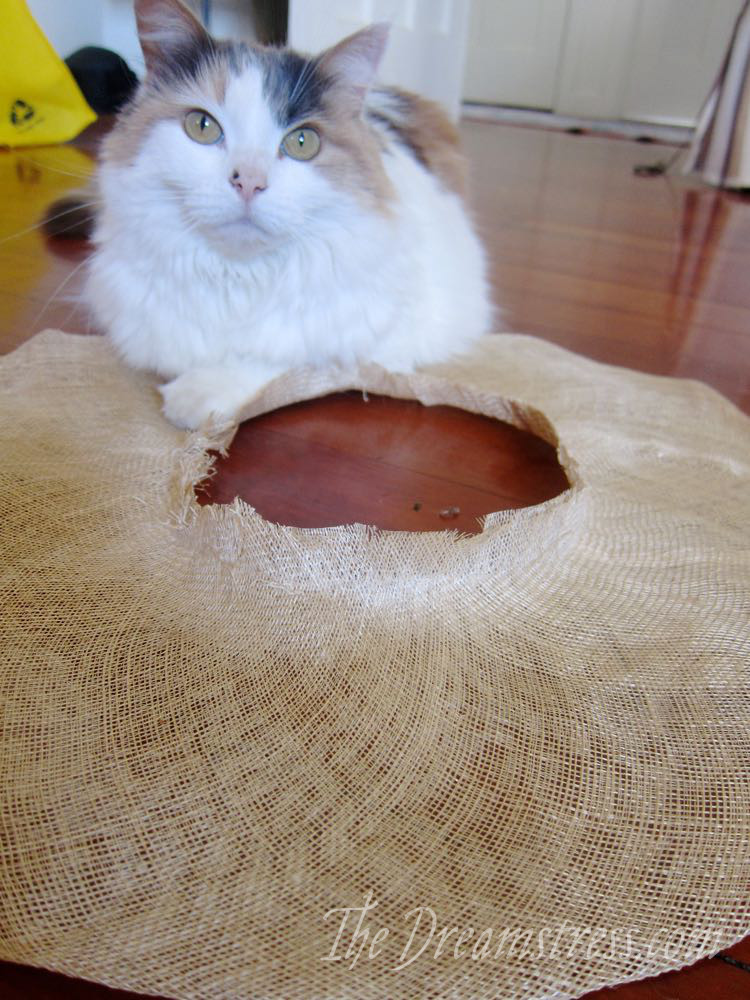
To make my hat, I separated the crown and brim of the original hat (they were already two pieces), shaped the brim to be large and flat (with assistance from Felicity as a hat-weight), shaped the crown to be round and shallow. I then liberally sized both, to be stiff enough to hold their shape, as sinamay is naturally quite soft.
I used corn-starch for my sizing, but in the humidity and heat it softened up again, and the crown warped slightly. I’ll have to re-shape it again.

Despite how light and delicate it looks, the hat is actually very robust. The threads from an abacá are extremely tough: it’s one of the strongest natural fibres in the world, and is sometimes called manila hemp. Because it’s so strong, it’s often used in making rope and paper (particularly for money). You almost certainly have something around the house made from it.
Abacá ranges from very coarse to quite fine: the rougher threads come from the outermost layers of banana bark, the finer threads from the inner layers. Sinamay is made from the inner layers, and is just one kind of cloth made from banana fibres that the Phillipines made historically. While basic abacá went through only the simplest processing, more elaborate processes resulted in higher grades of fabric, which were used for clothing locally. Sinamay was actually a coarser cloth, while some, like tinampipi, were extremely fine.
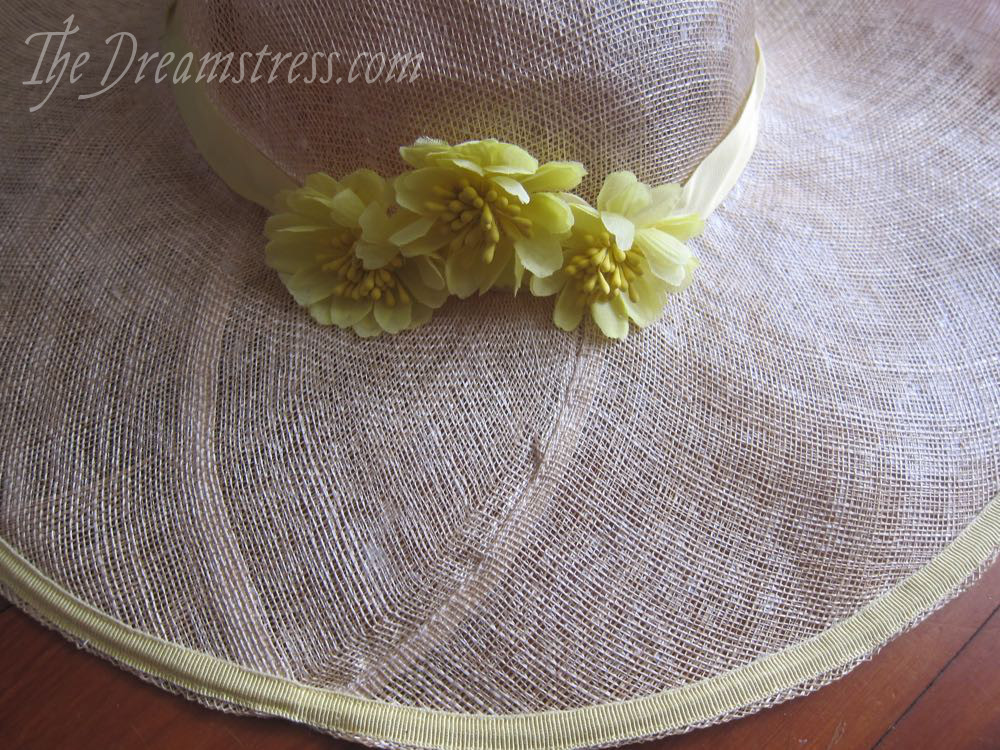
Abacá, along with sugar, was one of the Phillipines two main export crops at the turn of the 20th century. It had supplanted hemp, sisal and NZ flax as the most desired fibre for rope due to its strength and cheapness. In 1905 alone 128,564 tons of abacá were exported from the Phillipines, more than half of it to the US.
Abacá was definitely common and abundant in the West during the first quarter of the 20th century, but what about sinamay?
Sinamay has become a popular material for hats, but only fairly recently. The open-weave and lightweight fabric make it easy to shape over hat-mold, resulting in light summer hats, without the hassle of re-sewing hat braid into the correct shape. However, this popularity is very recent. It’s claimed that it was introduced into millinery in Australia only in 1990, and I’m pretty sure I’ve never encountered hat of woven sinamay that was earlier than the 1980s.
However, sometimes what we consider a new thing, or an introduction, is just the return of something that was previously used, but has been forgotten. In the 1940s (and possibly earlier) Abacá was made into braid which was exported to the West and fashioned into hats. They were called hemp hats, and most sellers and wearers may not have realised that the hemp was manila hemp, not actual hemp. Abacá is, of course, much coarser than sinamay, and a braided hat is very different to a shaped woven-cloth one. I’ve found mentions of ‘one piece hats shaped in the Philippines’, but unfortunately they are modern quotes which don’t give any idea of dating, or what these hats actually looked like.
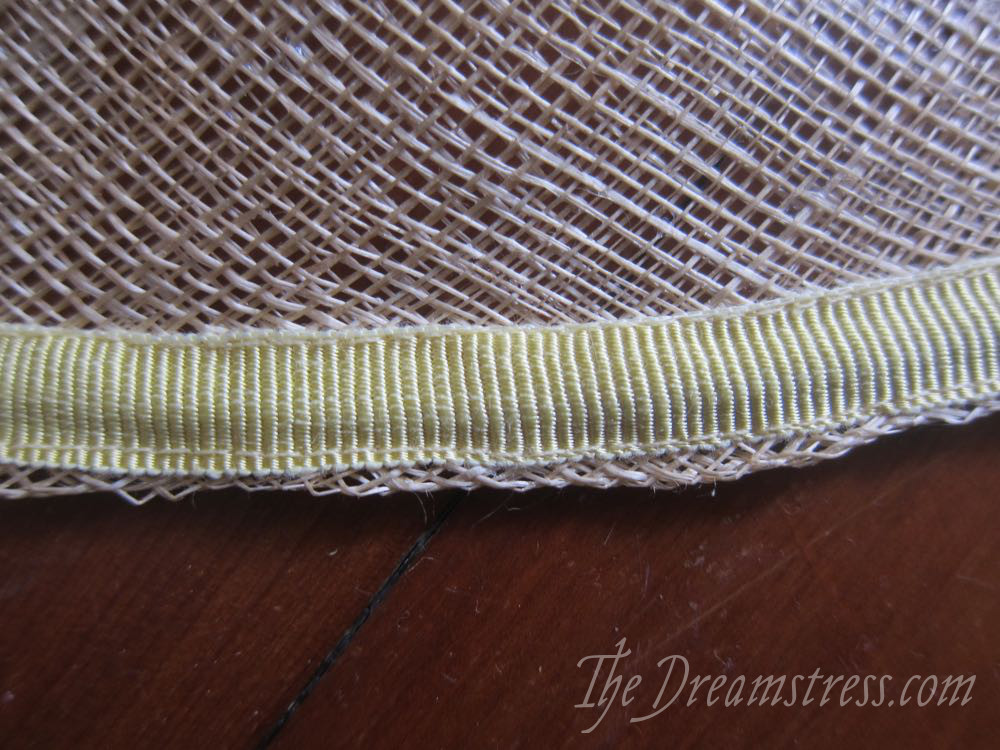
At the 1904 St Louis World’s Fair it was proposed that in the Philippines exhibition “‘Native manufacturers” would make sinamay, tinampipi, pifia, and jusi cloth, while others would demonstrate the making of ‘hats and mats and other fine braided ware…'”. The Philippines exhibition was one of the most popular at the World’s Fair (to the point where the participants were essentially kidnapped and forced to participate in subsequent fairs, rather than returning home), but the general focus was far more on their ‘exotic’ ‘otherness’ and shock-factor demonstrations like eating dog meat than on artistic crafts. Were some of the hats from sinamay? Did some visitors see past the colonialist and ethnocentric overtones to the possibilities of the materials the native craftsmen were working with?
Various items of sinamay clothing were definitely brought back from the Phillipines by visitors throughout the first half of the 20th century, like this sinamay shirt at the Metropolitan Museum of Art.
Even if sinamay hats weren’t made in the West, it’s possible that fashionable hats in the Western style were made in the Philippines. Western fashions were becoming the de-facto wear of the elite all over the world, but they were often re-interpreted slightly using local materials. There are definitely 1920s dresses in the most-up-to-date styles made in the Philippines, for local wear, out of piña cloth (banana fibre cloth). So a fashionably 1920s sinamay hat is not completely unrealistic.
If there were sinamay hats in the 1920s, I suspect it is more likely that they were made from braided fibres, rather than woven fabric which has been blocked and then sized to add stiffness, which is how I created my hat. Woven braiding is a much stronger, and more common, method for creating summer hats historically, and most of the open, lacey hats of the ‘teens and early 1920s I can find were created using this method.
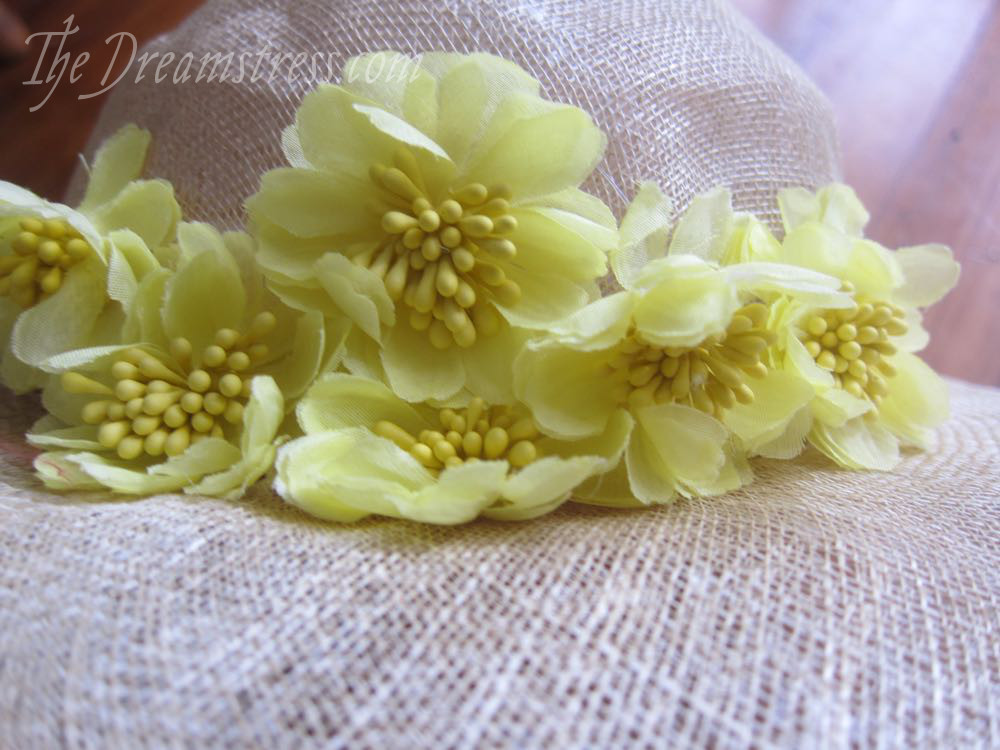
Ultimately, I’m calling my sinamay hat historically improbably, though it’s not entirely impossible. It does give the right effect, and serve its function of shading the eyes and skin, and looks smashing on the model, so that’s a win!
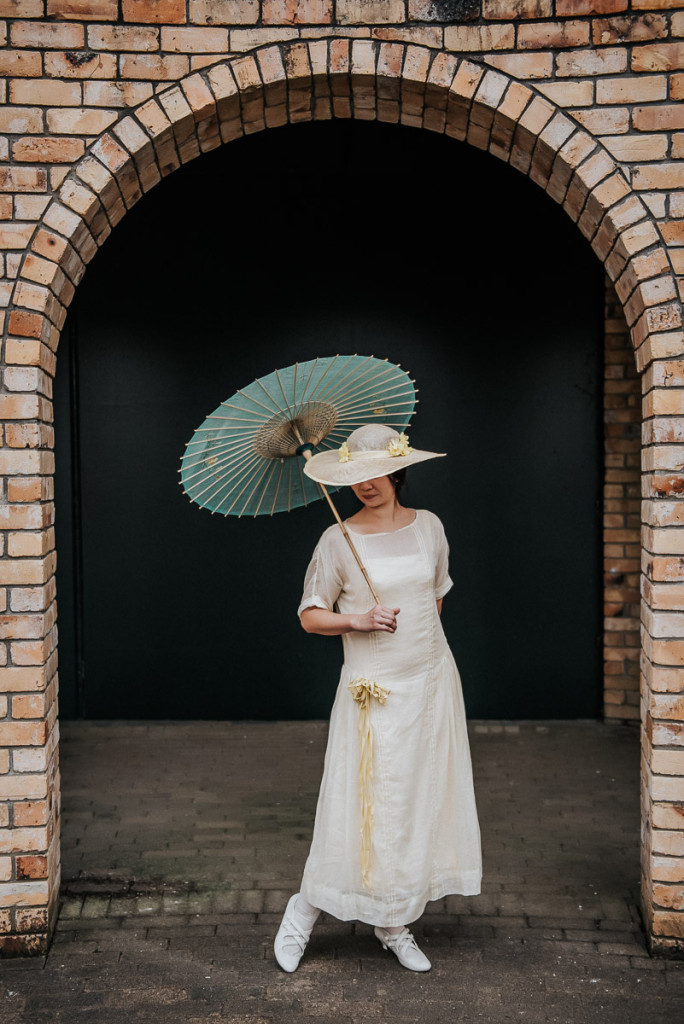
Courtesy of Tony McKay Photography and Glory Days Magazine
Sources:
Bailey, L.H. Cyclopedia of American agriculture, 2nd edition. New York: The MacMillan company. 1909.
Dewey, Lyster Hoxie. Fiber production in the western hemisphere. Washington: United States Department of Agriculture. 1943.
Hendrickx, Katrien. The Origins of Banana-fibre Cloth in the Ryukyus, Japan. Leuven University Press, 2007


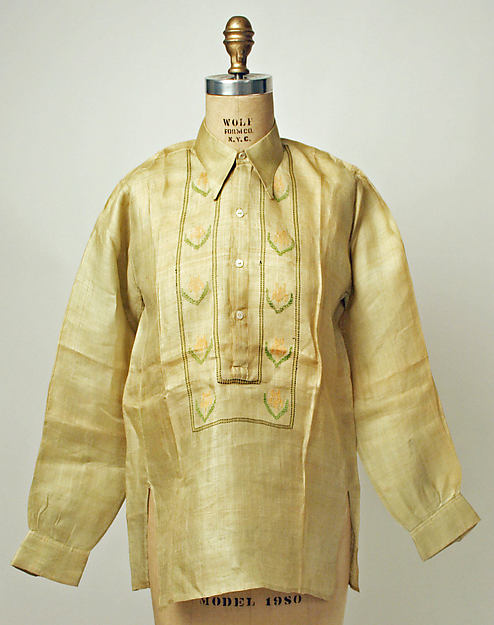
Apparently the banana is the world’s largest herb. So there you have it: a herbal hat 🙂
I like the hat!
Thank you for this: One of the many joys of living in Hawaii was learning about the incredible weaving cultures in the Pacific. It’s too easy to perpetuate “native in need of civilization” myth when the colonizers choose to depict the first peoples without clothing and without the means to do so. Although your post only touched on traditional uses, I really appreciate that you brought it up.
I think I came across this material online when trying to figure out what hat-making materials were available in the Czech Republic, for possible future historical costuming interests… but I didn’t know the further details. It’s fascinating, and may I say, plausible or not, it does make a fabulous garden party hat!
Thank you! I didn’t know some of those things about sinamay. It’s so tricky with 1920s hats because many of the materials don’t seem to be available anymore, and the language of millinery seems to have changed a lot since then too. I read a reprint of a 20s millinery book and could barely understand it! So I think getting the look right is good enough!
Love the hat and the dress! 🙂
Ooo, I did love that hat when you first posted pictures of this ensemble (and that parasol! I feel the need to sneak over to New Zealand (not that I’m close, lol) and “borrow” it from you… the color is divine!). It’s lovely, and I’m tickled that you were so inspired by the hat I made!
Best,
Quinn
Beautiful hat. Where did you purchase your sinamay?
I took apart and re-made an old 1980s sinamay hat 🙂